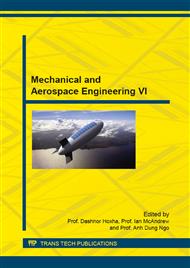p.129
p.135
p.140
p.148
p.155
p.160
p.165
p.170
p.175
Design and Analyses of a Propeller for Underwater Vehicles Using Computational Fluid Dynamics
Abstract:
This paper presents results of computation of a unique propeller design for underwater vehicles using an original in-house algorithm which is developed for the problems of fluid dynamics. Specific software based on finite volume calculations are used to validate design procedure. Conventional propellers having experimental results are good choice to investigate the convenience of solutions. Cavitation tunnel test results of two types of conventional propeller namely P-4382 and P-4119 were considered as a test-case study. The characteristic performances of those were all compared with CFD analysis for different conditions to realize the effects of mesh generation, discretization method and turbulence model in numerical process. Design criteria for unique propeller were selected according to underwater vehicle performance and its requirements. Then the method performed in validation stage was entirely implemented to the new design to observe its performance curves. The results show that this new propeller design is capable of providing desired thrust, vehicle velocity and power output with high efficiency for underwater vehicle. Algorithm implementation, mesh generation, turbulence models and solution methods in CFD process are so suitable that results of analyses are matching with experiments.
Info:
Periodical:
Pages:
155-159
Citation:
Online since:
October 2015
Authors:
Price:
Сopyright:
© 2015 Trans Tech Publications Ltd. All Rights Reserved
Share:
Citation:


